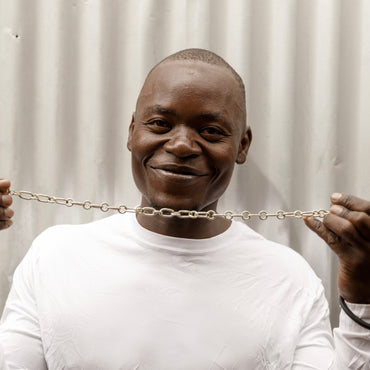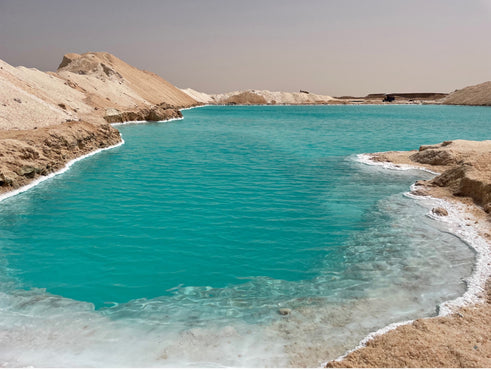How to live more consciously and recycle better

If you are like me, you have always cared about the environment and our planet but you also have mixed feelings about how much you as an individual consumer can do about it. And also, we are all doomed anyways, so why bother? Or perhaps you believe that those smart scientists and rich corporations will eventually come up with some amazing new technology that will solve all of our problems in one fell swoop.
The truth is, it took me a long time to shake those beliefs off. In fact, I used to think that some environmental activists are downright obsessive. I was both overwhelmed and in denial about the dangers of our linear consumption model. Despite scientists’ dire warnings for decades, it is hard to conceptualize that we humans are no longer an isolated species thriving on nature’s resources, but a global force that our planet is incapable of supporting much longer if we continue on the same path of constant economic growth fueled by increasing consumption. Our culture of endless consumption of cheap short-lived items means that our impact on the Earth is no longer negligible.
And that is scary. But the good news is, everyone can contribute towards change and it isn’t even that hard.
So, you want to help make the world a more sustainable place, but just like anything else you have never done it before, living in a more sustainable way might seem daunting to you. Like too much work. It shouldn’t.
While a lot of people think that separating recyclables is the best thing they can do, in reality more than half of what has been collected for recycling ends up in landfills. So your first step towards a more sustainable lifestyle should always be minimizing consumption and reusing as much as possible. The famous reduce, reuse, recycle trio in that order. No need to go all crazy zero waste. Every single time you decide to pass up on buying something you don’t really need or, if you do end up buying something, you make sure to reuse it at least a couple of times you are already making a difference. For example, that bottled water that just seems so convenient when you are out and about, it’s best to avoid it. Between all the greenhouse gas emissions from producing the bottle and then transporting it sometimes literally across the world and all the additional waste generated, it is one of the worst unnecessary contaminants in our daily lives. Drink as much tap water as you can and if you can bring along your own bottle, even better. But don’t sweat it. Baby steps are OK.
Another easy step towards sustainability is reusing glass jars. Just wash them out and use them for food storage. You can even take off the stubborn labels with some hot water and a scrub and voila! You have beautiful hipster jars for free. And glass preserves the taste and quality of food for way longer than tupperware.
If you are still set on recycling though, start off by focusing on the items that have the highest likelihood of being recycled so you can maximize your impact while minimizing the extra effort. These are also the materials that are most commonly recycled curbside (i.e. they are collected by your local municipal waste company). What many people don’t know is that recycling isn’t a service, it’s a business operating on the same principles as any other business. Someone needs to buy the collected recyclable materials to use in their own production process and if it doesn’t make financial sense for an item to be recycled, it is going to end up in a landfill even though you placed it in the recycling bin. That is why, the materials that are easier to extract value from by recycling them have the highest recycling rates. According to the EPA, about 97% of shipping cardboard boxes in the US are recycled, 71% of steel cans and 50% of beer and soft drink aluminum cans, 65% of newspapers, 35% of aluminum cans, 31% of glass bottles, and 27% of PET bottles, compared to only 10% for plastic bags and similar percentages for other plastic packaging.
So start with these, but make sure that you are turning them in in the right conditions. I’ll explain. As already mentioned, recycling is a business. For a batch of recyclables to be purchased by a recycling company, it needs to meet certain requirements that include the percentage of contamination. Here is what you need to do by category:
- Glass bottles - remember to rinse them out
- Plastic PET bottles (from soda or bottled water) - also rinse them out
- Paper – only recycle paper that hasn’t been in contact with food. Greasy stains are a no-no
- Cans – rinse them out but don’t crush them, as they become harder to sort out when flattened
Here is a bit more important wisdom about recycling that few people seem to know:
- When in doubt, throw in the trash. Due to that same contamination issue we talked about earlier, the more items there are that don’t belong in the recycling bin, the lower its chances of being recycled. It’s a myth that recyclables get easily sorted at facilities. It can be too costly because it has to be done manually so oftentimes they are not. Especially since China stopped buying other country’s trash indiscriminately in 2018.
- Rinse food containers before recycling them. Any food waste can contaminate a whole container worth of recyclables.
- Plastic bags are rarely recyclable curbside. Remember what I said about recycling being a business just like any other? Well, plastic bags are rarely profitable to recycle as the cost of converting them into new products is higher than the price of those products due to the low quality of plastic that they are made of. And recycling facilities don’t like them because they get stuck causing failure of their equipment.
- Recycling is not the solution to everything. Items cannot be recycled indefinitely. With each recycling cycle, materials lose some of their characteristics, so usually virgin materials have to be added in to ensure the quality of the final product. So our best bet is to reduce and reuse first and only recycle as a last resort.
Don’t feel overwhelmed, please. Everything takes time and anything you do, is better than not doing anything. Start small, incorporate one habit into your routine at a time. You will be surprised how these things become second nature eventually. First, take a second before buying anything to consider whether you really need it and before throwing anything out, whether you can reuse it instead. Then, designate a bin or a bag, or any container really, to collect those PET and glass bottles and relax. Once you’ve gotten into the habit of rinsing them out and recycling them, you can move on to the next step.
I’ll be right here waiting with more easy tips on how to make your everyday life more sustainable.




